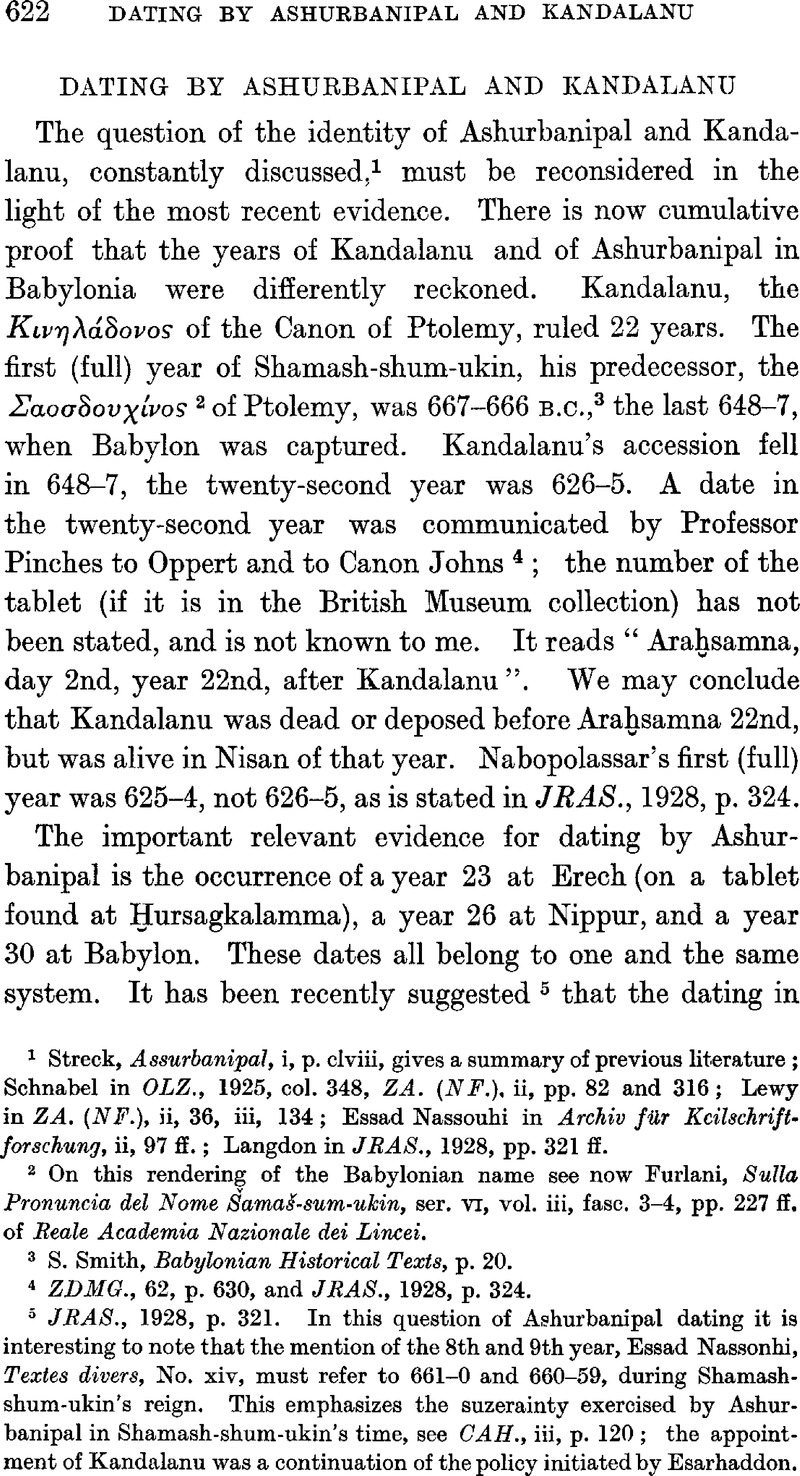No CrossRef data available.
Article contents
Dating by Ashurbanipal and Kandalanu
Published online by Cambridge University Press: 15 March 2011
Abstract

- Type
- Miscellaneous Communications
- Information
- Copyright
- Copyright © The Royal Asiatic Society 1928
References
page 22 note 1 Streck, , Assurbanipal, i, p. clviiiGoogle Scholar, gives a summary of previous literature; Schnabel in OLZ., 1925, col. 348, ZA. (NF.), ii, pp. 82 and 316; Lewy in ZA. (NF.), ii, 36, iii, 134; Nassouhi, Essad in Archiv für Kcilschriftforschung, ii, 97 ff.Google Scholar; Langdon, in JRAS., 1928, pp. 321 ff.Google Scholar
page 622 note 2 On this rendering of the Babylonian name see now Furlani, , Sulla Pronuncia del Nome Šamaš-sum-ukin, ser. vi, vol. iii, fasc. 3–4, pp. 227 ff.Google Scholar of Reale Academia Nazionale dei Lincei.
page 622 note 3 Smith, S., Babylonian Historical Texts, p. 20Google Scholar.
page 622 note 4 ZDMG., 62, p. 630, and JRAS., 1928, p. 324.
page 622 note 5 JRAS., 1928, p. 321. In this question of Ashurbanipal dating it is interesting to note that the mention of the 8th and 9th year, Essad Nassonhi, Textes divers, No. xiv, must refer to 661–0 and 660–59, during Shamashshum-ukin's reign. This emphasizes the suzerainty exercised by Ashurbanipal in Shamash-shum-ukin's time, see CAH., iii, p. 120; the appointment of Kandalanu was a continuation of the policy initiated by Esarhaddon.
page 624 note 1 This would explain the 21 of Sammugea by an easy scribal error. But if Ashurbanipal died at latest in his forty-first year, as ia argued below, the figurea are worthless.
page 624 note 2 Landsberger and Bauer in ZA. (NF.), iii, p. 89, translating la mēsu “unheilige Handlungen”, rely apparently on parṣu = mesu; but that equivalence may be an argument for parṣu = “temple”. That mesu in the present passage means “temple”, “shrine”, or something concrete is certain.
page 625 note 1 Budge, , History of Egypt, vol. vi, p. xivGoogle Scholar. If any doubt were possible, compare now (mat) Arzā ša paṭi naḫal (mat) Muṣur and (mat) Arzā ša itē naḫal (mat) Muṣri, Hommel, , Grundriss, pp. 1032, 1038Google Scholar, Weissbach, in ZA. (NF.), iv, p. 110Google Scholar, and Nassouhi, Essad, Textes divers, No. xii, 1. 7Google Scholar.


